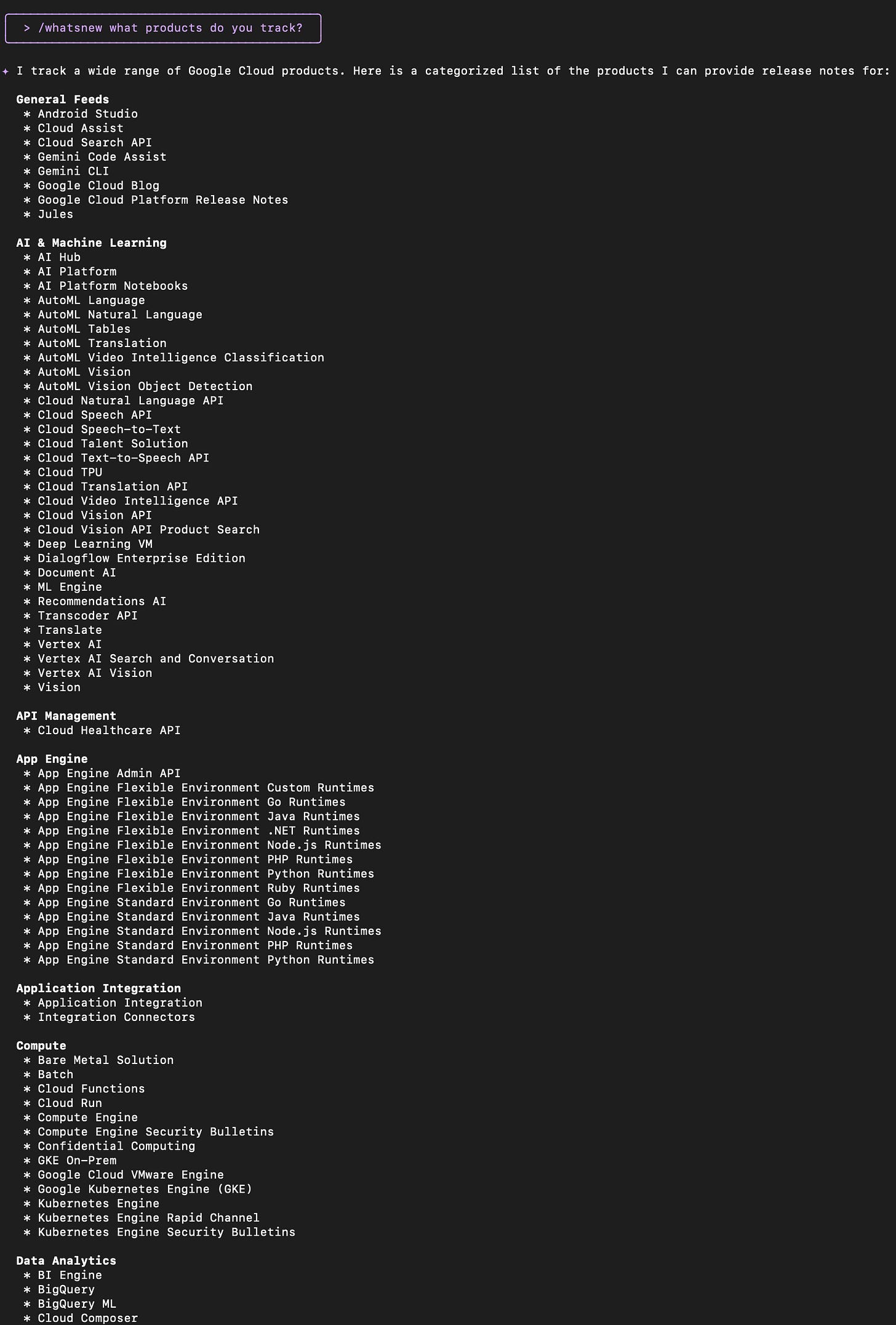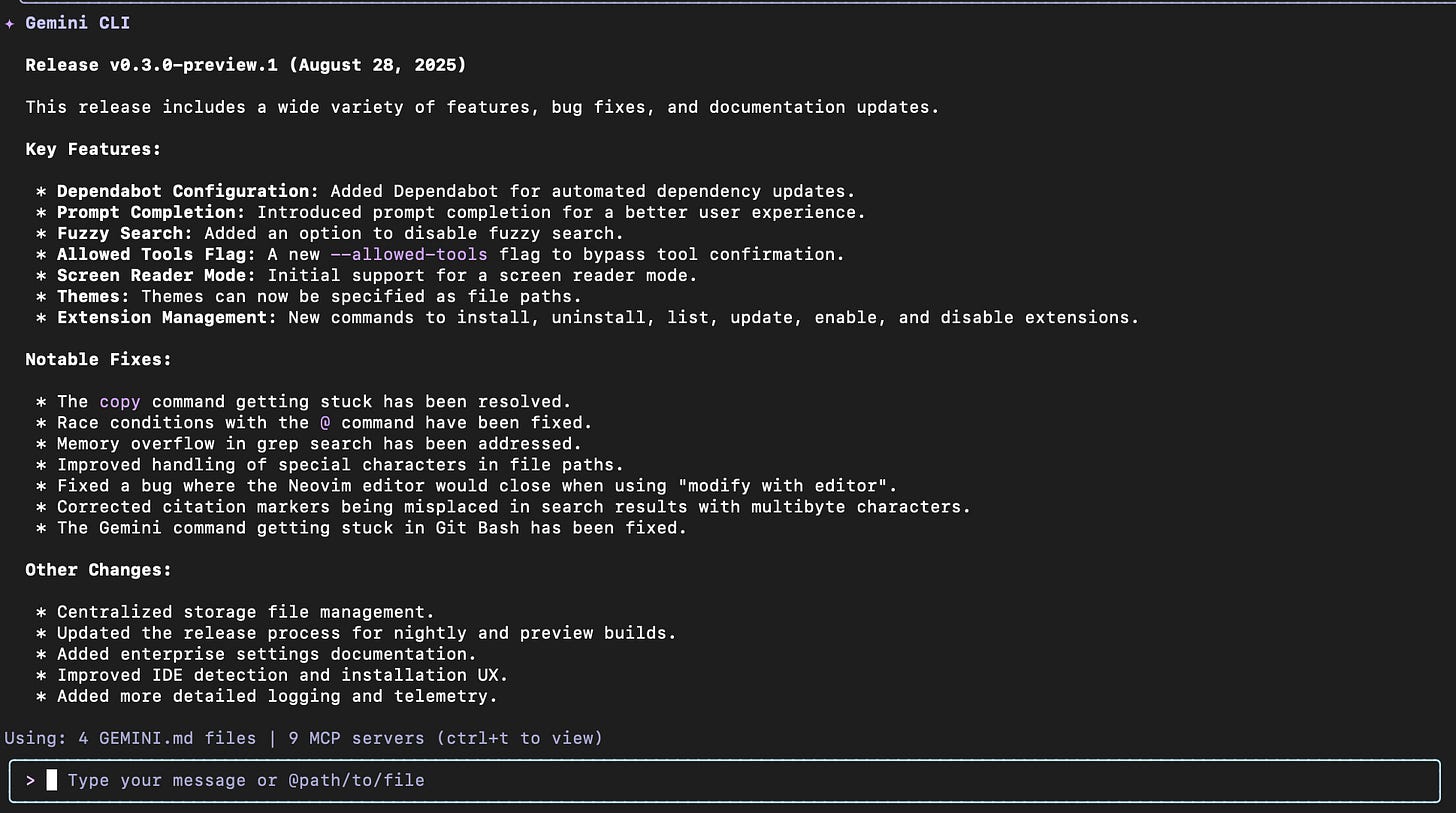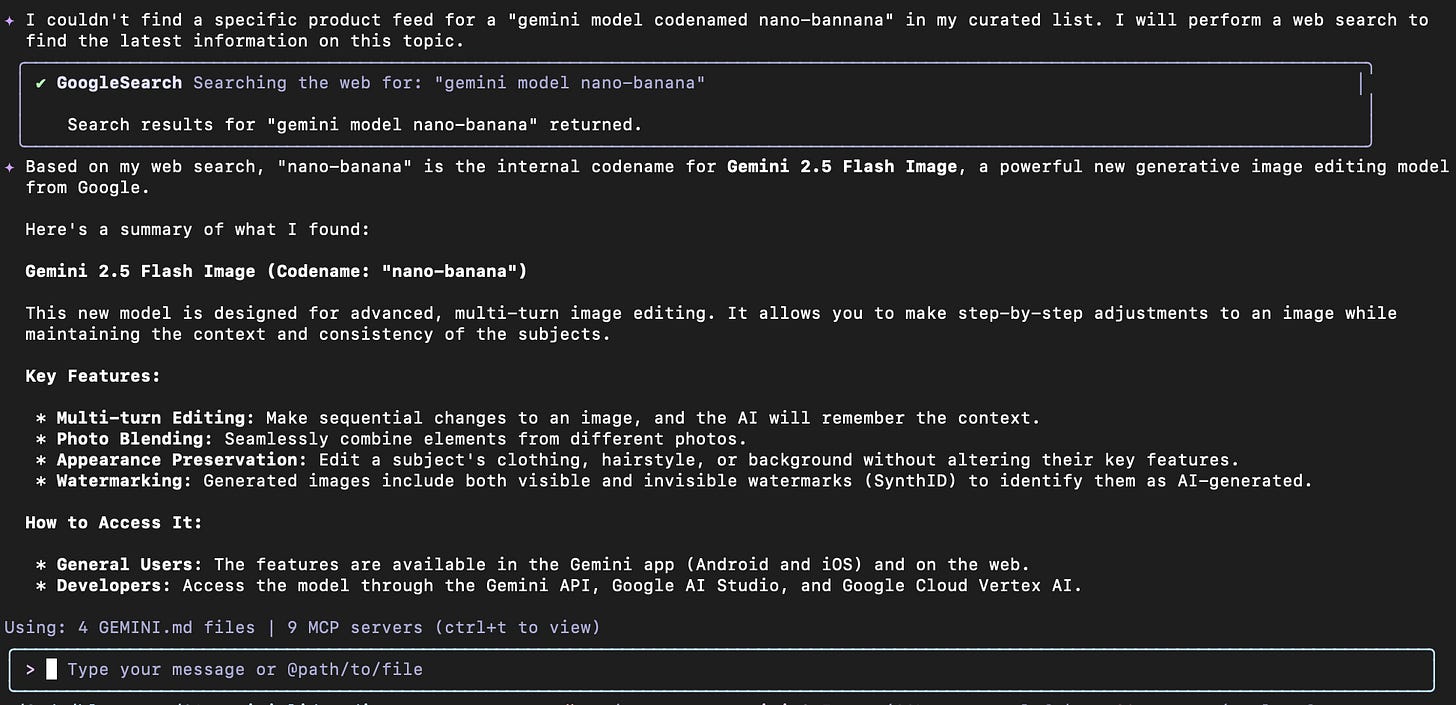/whatsnew: A Custom Gemini CLI Command for Google Cloud Updates in Your Terminal
For developers living on the command line, context-switching to a browser to read release notes is a major drag. What if you could bring those updates directly into your terminal?
Keeping track of Google Cloud release notes often means navigating multiple product pages, which can be a constant context switch. I created /whatsnew, a custom command for Gemini CLI, to solve this problem by fetching the latest updates for any Google Cloud product directly from the command line.
Demo
How to Install
The /whatsnew command is defined in a single whatsnew.toml file, available in the https://github.com/pauldatta/gemini-cli-command-whatsnew repository.
To install it, run the following command in your terminal. This will download the command file to your local Gemini commands folder:
mkdir -p ~/.gemini/commands && curl -sSL https://raw.githubusercontent.com/pauldatta/gemini-cli-command-whatsnew/main/.gemini/commands/whatsnew.toml -o ~/.gemini/commands/whatsnew.toml
Existing Release Note Channels
Before diving into /whatsnew, it's worth noting the official channels Google Cloud provides for release notes:
The Google Cloud Release Notes Page: A central hub for updates from the last 60 days across all products.
The Google Cloud Console: View and filter all release notes directly within the Cloud Console.
BigQuery: A public BigQuery dataset for programmatic access to release notes.
How It Works
The /whatsnew command uses a curated list of official Google Cloud product RSS feeds and works in two main steps:
It first parses your request, identifying the Google Cloud products you've specified.
For each product, it either fetches and summarizes updates from its RSS feed or, if no feed exists, uses a Google Search to find the latest release notes
To keep you in your workflow,
/whatsnewgets you the information you need, using a Google Search as a fallback for any products without a dedicated feed. While this provides a reasonably accurate result, it may not always be 100% perfect.
Product Coverage
The /whatsnew command supports a wide range of Google Cloud products. Here's a sample of the categories covered:
AI & Machine Learning: Vertex AI, BigQuery ML, Cloud Natural Language, and more.
Compute: Compute Engine, Google Kubernetes Engine (GKE), Cloud Run, and Cloud Functions.
Databases: Cloud SQL, Bigtable, Spanner, Firestore, and AlloyDB.
Data Analytics: BigQuery, Dataflow, Pub/Sub, and Looker.
Developer Tools: Cloud Build, Artifact Registry, Cloud Code, and Cloud SDK.
Networking: Virtual Private Cloud (VPC), Cloud Load Balancing, and Cloud DNS.
Security: Cloud IAM, Secret Manager, and Security Command Center.
Storage: Cloud Storage, and Cloud Filestore.
The list of supported feeds is continually updated (Help?)
Usage Examples
Here are a few examples of how to use the command.
1. Get the Latest Gemini CLI Update (Default)
Running the command without arguments defaults to checking for updates to the Gemini CLI itself:
/whatsnew2. Get the Latest Update for a Single Product
To get the latest changes for Cloud Run, run:
/whatsnew cloudrun3. Check Multiple Products at Once
You can query multiple products in a single command:
/whatsnew bigquery cloudstorageThe output is formatted in Markdown with a separate heading for each product.
4. Query a Specific Version
The command can also handle version-specific queries. For example, to find out what was in the v0.2.2 release of the Gemini CLI, you can run:
/whatsnew gemini cli 0.2.2If the version isn't found in the feed, the command will fall back to a Google Search to find the release notes.
5. Discover News About New Models
If you hear about a new model, you can ask /whatsnew about it:
/whatsnew gemini new models nano-bananaEven if the term isn't in the curated list, the command will search for it online and provide the latest information.
Final Thoughts
If you find a missing product feed or have an idea for an improvement, please open an issue or a pull request on the GitHub repository.
You can learn more about creating custom commands in the official documentation and see how I built a multi-modal agent with this feature on my blog.








